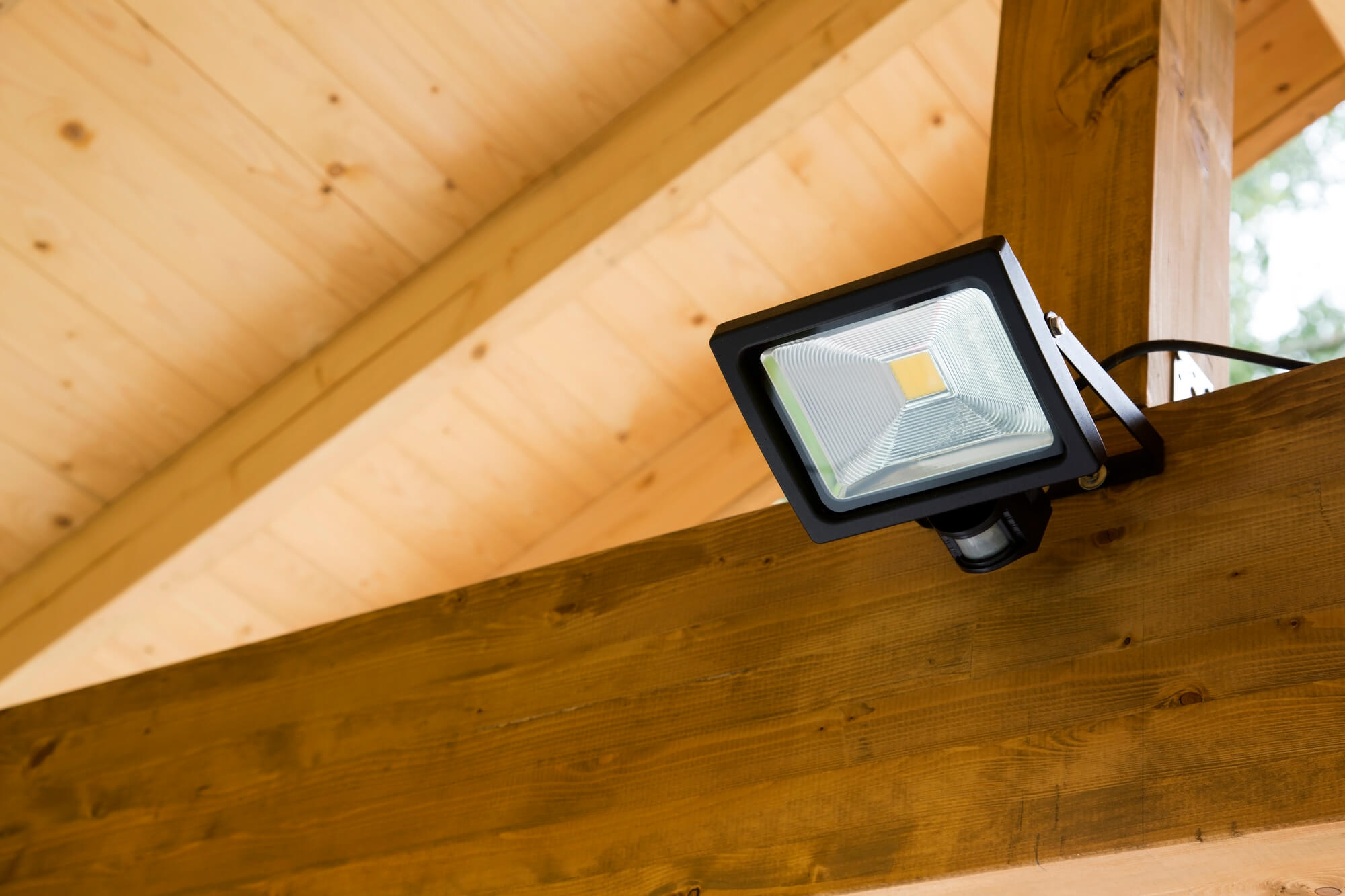24 Dec Photocell vs. Motion Sensors: A Comparison
What is a Photocell?
A photocell light sensor is a small electronic device that contains a resistor, electrodes, and a transparent cover over the face. It uses light to control the flow of electrical current. Although photocells come in a few different varieties, they’re all powered by the same semiconductor technology that controls the electric current.
How Does a Photocell Work?
Semiconductors are considered the brains of modern electronics. They’re an essential piece that facilitates the advancement of communication, computing, healthcare, military, transportation, clean energy, and more. Semiconductors don’t usually conduct electricity, but if they’re exposed to enough light, an electric current is generated.
Types and Uses
- Photocells are regularly used to control parking lot lights, street lights, and illuminated business signs. A wide range of photocells are available, but we’ll discuss those most relevant to indoor and outdoor lighting.
- Plug-in photocells are compatible with a standard outlet and command a pass-through plug. They’re the simplest way to control the operation of a single lamp.
- Lamp base photocells screw into a light bulb socket, transforming virtually any light fixture (lamps, permanent fixtures indoors and outdoors) into an automatic lighting system. This is an excellent photocell sensor for outdoor lights on your home connected to a light switch.
- Line-voltage photocells command an entire electrical circuit. This type of photocell is the perfect solution for managing security or landscape lighting. If you combine the sensors for outdoor lighting with timers controlling indoor lighting, you can ward off intruders by creating the illusion that someone is home.
The Dusk to Dawn Light Sensor
The most common use of photocells is for dusk to dawn lighting, which turns landscape or general exterior lighting on at sunset and off at sunrise. This requires line-voltage photocells. An added perk of using a photocell sensor for dusk to dawn lighting is that you don’t need a timer. They automatically adjust to natural light, including seasonal changes in light.
Pros and Cons
Photocell light sensors are mostly beneficial. In fact, there are very few downsides.
The advantages include:
- Low cost
- Long life
- Reliable and wide sensing range
- Quick response time
The disadvantages are:
- Transparent cover gets dirty over time, decreasing sensor sensitivity
- Lights that offer a longer lifespan cost significantly more
- Lack of additional controls
Movement and Motion Sensors
Photocells and motion sensors differ in the way they trigger lights to turn on. Photocells detect changes in light levels and react accordingly. Motion sensors respond to any physical movement within their range. Motion sensors can work one of two ways:
- Active sensors emit light or ultrasonic sound. They’re activated when one of those signals reflects a movement to the sensor. Depending on the motion sensor’s range, it may be able to detect motion around corners.
- Passive sensors operate by infrared detection. They sense the infrared energy emitted by warm objects like animals or people and are triggered when these warm spots move.
Controls and Uses
Motion sensor lights are prevalent in many different settings. From commercial to residential, you’ve undoubtedly seen them countless times. Motion sensors are used to supplement security systems, to create a hands-free lighting solution (i.e. when you walk in the door with your arms too full to turn on the lights), as an energy-efficient lighting option in commercial buildings, and more. An essential consideration for motion sensors is how you might set the controls to fit your needs. There are usually two forms of motion sensor light controls available:
- Sensitivity control lets the user set the degree of motion required to trigger the sensor. This matters because you want a person coming into the room to trigger the lights, not a bug.
- Time delay control lets the user decide how long the lights stay on after the sensor is triggered, and no further motion is detected.
Some motion sensors include a control to set the range of the area they detect, so you can cover your driveway and sidewalk but avoid movement from tree branches and streets.
Pros and Cons
Motion sensors for lights were created to make life easier. Since they were designed to be helpful, the advantages outweigh the disadvantages. Let’s explore each side.
The pros of motion sensor lights include:
- Energy-efficiency
- Simple installation
- Convenience
- Controls
- Lifespan
The cons include:
- Temperature sensitivity
- False triggers
- High-quality lights that offer a longer lifespan cost significantly more
LED Compatibility
LED lights are popular because they’re so cost- and energy-efficient. While LED bulbs can be used with photocells, they run at such a low voltage that they require a different photocell type than a conventional bulb. If you’re interested in further cost-savings, energy-efficiency, and other benefits, motion sensors can also work with LED lights, but only LED lamps specifically.
Find Your Ideal Lighting Solution
If the quest for your perfect lighting solution has come down to the choice between photocells and motion sensors, keep in mind that, although both options can be effective on their own, the two can also be combined into one comprehensive lighting solution. For example, you can create security lights around your home or office that only activate when it’s dark outside.
The best way to ensure you make the right lighting choice is by taking the time to do your research and weigh your options. It all comes down to your preferences and circumstances. At Lighting Maintenance Inc, lighting is what we do. Visit our website to stay updated on lighting news and learn how we can work together to create your ideal lighting solutions. Home lighting choices impact your day-to-day life more than you might realize. Proper lighting can make a room more comfortable, make your home more secure, and save energy. Photocells and motion sensors are two different electronic methods used to manage indoor and outdoor lighting. Both sensors can help bolster security by automatically turning on when the sun goes down or when they detect motion. They also shut off automatically when the extra light is no longer needed, which saves energy.
Photocells and motion sensors share many characteristics, but they operate in entirely different ways. They’re often used to accomplish similar tasks, but they can be used together to create a secure and energy-efficient lighting system.





